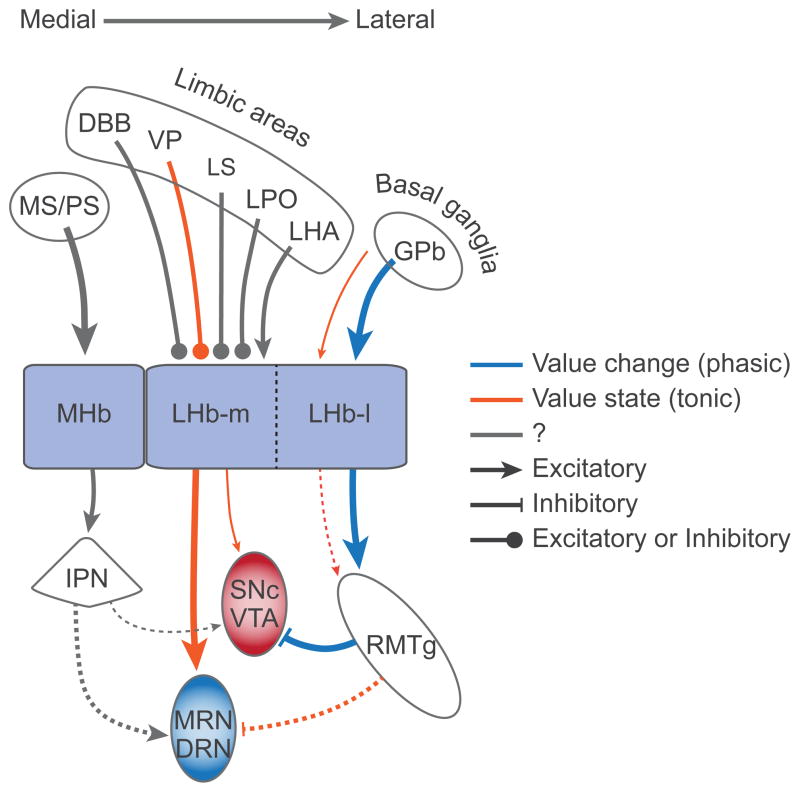Figure 2.
Both lateral habenula (LHb) and medial habenula (MHb) control the dopaminergic (DA) and serotonergic (5HT) systems. The lateral part of LHb (LHb-l) mainly influences the DA system (SNc and VTA) through the rostromedial tegmental nucleus (RMTg), whereas the medial part of LHb (LHb-m) mainly influences the 5HT system (MRN and DRN) directly. The RMTg-VTA/SNc connection is inhibitory; the other connections are mostly excitatory, although they may target inhibitory interneurons. MHb may influence the DA-5HT systems indirectly through the interpeduncular nucleus (IPN), although these connections need to be confirmed. Inputs to DA neurons may signal ‘value change’ by changing their level phasically, whereas inputs to 5HT neurons may signal ‘value state’ by changing their level tonically. It remains to be studied whether neurons in LHb and MHb transmit the phasic and tonic signals differentially to the DA-5HT systems. Dashed lines indicate connections that need to be confirmed and line thickness indicates the presumed strength of connection. DBB, diagonal band of Broca; DRN, dorsal raphe nucleus; GPb, globus pallidus, border region; LHA, lateral hypothalamic area; LPO, lateral preoptic area; LS, lateral septum; MRN, median raphe nucleus; MS, medial septum; PS, posterior septum; SNc, substantia nigra pars compacta; VP, ventral pallidum; VTA, ventral tegmental area.

